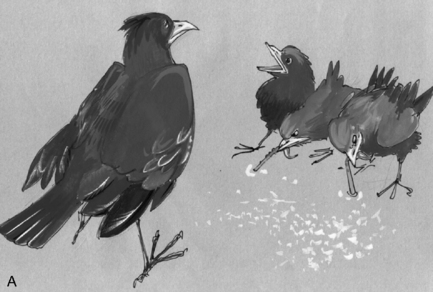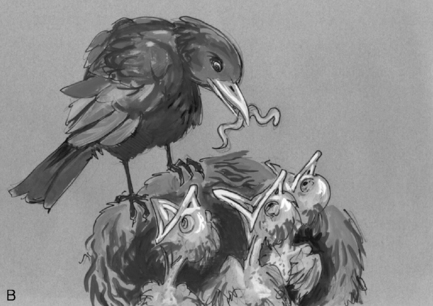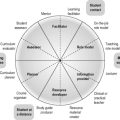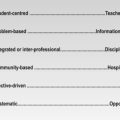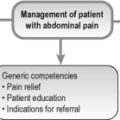13 Adopting a student-centred approach
The move from teacher-centred to student-centred learning
The two key inhabitants of the medical school are the students and the teachers, with a major focus on the teacher and what is taught. There has been a significant shift in emphasis from the teacher to the student and what the student learns. In this move from teacher-centred to student-centred learning, the role of the teacher has changed from one of information provider to a facilitator of learning – from being a ‘sage on the stage’ to a ‘guide on the side’ (Figure 13.1). This concept of student-centred learning underpins much of what this book is about.
A teacher-centred approach emphasises prescribed learning experiences, courses or programmes with a set range of formal activities. It can be likened to eating in a restaurant with a table d’hôte menu where the diners have to eat what the restaurateur chooses. The student- centred approach in contrast is more like an á la carte menu where the diners choose what they want to eat from the menu of options provided. Teacher-centred and student-centred learning differ with regard to the student’s engagement with content, the teaching and learning methods, the responsibility for learning, assessment and the balance of power (Table 13.1).
Table 13.1 A comparison between student-centred and teacher-centred learning
| Teacher-centred | Student-centred | |
|---|---|---|
| Engagement with content | Students learn and memorise content as presented by the teacher | The students reflect on the content and make their own sense out of it |
| Relation of the teaching and learning methods to the student’s learning outcomes | The teacher does not relate the teaching to the learning outcomes | The teacher uses a variety of methods and matches these to the student’s achievement of the learning outcomes |
| Responsibility for learning | The teacher takes responsibility for teaching and assumes that the student will learn | The teacher provides the students with increasing responsibility for their own learning |
| Assessment | The teacher does not integrate assessment with the learning | Assessment is integrated with the learning process |
| Balance of power | Decisions about the course, the approaches adopted, the policies and the deadlines are taken by the teacher | The student is engaged with decisions about the curriculum |
(adapted from Blumberg, 2009)
Reasons for the move
The move to student-centred learning has taken place for a number of reasons:
• Student-centred learning is more motivating for students. As Winston Churchill said, ‘Personally, I am always ready to learn, although I do not always like being taught’.
• In today’s consumer-driven society there is more interest in the student as a consumer of the learning.
• Students are admitted to study medicine from more diverse backgrounds with varying learning needs.
• The concept of outcome-based education embraces a commitment to ensure that all students achieve the expected learning outcomes. How they do this will vary from student to student.
• Student-centred learning prepares the student to take responsibility for continuing learning after completion of their undergraduate and postgraduate studies.
• New learning technologies, as described in Section 4, are available which give students more control over their learning.
• Students react positively when allowed to make decisions about their own learning. This is reflected in the extract from a student’s diary shown in Box 13.1.
At the beginning of the course:
‘I would prefer a lecture course with the optional extra of working on the computer.’
‘I would now choose a course combining e-learning with printed material and occasional lectures.’
‘I believe the lecture course should be scrapped. It is a waste of time. I learn better at my own rate on the computer. Now I have time to learn about endocrinology instead of just collecting a set of lecture notes.’
The role of the teacher
• clarifying expected learning outcomes
• assessing the student’s knowledge and skills in relation to the topic
• working with the student to plan the most appropriate sequence and pace of learning
• advising the student about the available learning opportunities to meet their personal needs
• providing formal instruction where this is necessary
• directing the student to tools which they can use to assess their achievement of the learning outcomes
• offering remedial advice where this is required and reassessing the student’s achievements.
Student-centred learning does not mean that the teacher abandons the students to their own devices. ‘Self-directed learning’ has been used to describe the approach. A more appropriate term is ‘directed self-learning’ as students need some form of help or direction. The extent to which the teacher controls or directs the student or trainee will vary over time. Dron (2007) suggests that ‘the optimal degree of learner control at any point will exist somewhere between the two extremes, complete autonomy and total control by another. The difficult task for both teacher and learner is to decide exactly where that point is. A perfect educational system would be one that offers the learner the means to choose at any point what level of control he or she may exercise’.
The use of study guides
A question to be asked is ‘How can the teacher support the students’ learning, particularly when there may be limitations on how much on-going support or time the teacher has available to devote to individual students or trainees?’. One answer is for the teacher to provide the student with a study guide. Rowntree (1990) has equated a study guide to a tutor sitting on the student’s shoulders, available 24 hours a day as required. The guide can be print-based or made available electronically. The purpose is to facilitate learning by describing how the student can best interact with the range of learning opportunities available in order to meet the expected learning outcomes.
A study guide has three elements:
1. A management function. Students are offered advice about what they should be learning – the learning outcomes – and the range of learning opportunities available. As they work through the learning programme they are guided on how they can assess their progress, how they can make best use of their time, and what they can do if they encounter difficulties. The study guide can offer encouragement to the learner.
2. A set of activities. Activities embedded in the guide can require a student to apply their newly acquired knowledge and skills in practice whether it is with a simulated patient scenario or in a real clinical context. The student can be advised, for example, of the types and numbers of patients they should see in the clinical setting and the procedures they should carry out.
3. Content. A study guide should not be confused with or replace a textbook. It may contain information about the topic not readily available from another source. It can put what the student is learning in a local context and can provide updated content where there have been recent changes in practice.
The level of sophistication or complexity of a study guide will vary. Sophisticated study guides have been produced as part of major projects or as part of a curriculum development activity. Less complex study guides can be produced more quickly by teachers for their own course, yet still be of value to the students. The template provided in Appendix 2 will help with the design of a guide. A page from a study guide is given in Appendix 4.
Reflect and react
1. Most teachers believe that students should assume responsibility for their own learning, but their behaviour as a teacher does not support this philosophy. Where does your own approach lie on the continuum between student-centred and teacher-centred approaches?
2. Think what you might be able to do in your situation to make your programme more student-centred, for example in the dimensions noted in Figure 13.1.
3. If your course lacks a study guide why not prepare one yourself? Your students will greatly appreciate your efforts.
4. The implementation of a fully adaptive curriculum is unlikely to be possible at present. Think about the actions you might take to align the teaching and learning programme more closely to the individual needs of each student or trainee.
Harden R.M. Independent learning. In: Dent J.A., Harden R.M., editors. A Practical Guide for Medical Teachers. third ed. London: Elsevier; 2009:168-173. (Chapter 21)
The six key principles of independent learning are outlined in this chapter.
Harden R.M., Laidlaw J.M., Hesketh E.A. Study guides – their use and preparation. AMEE Medical Education Guide No. 16. Med. Teach.. 1999;21:248-265.
Blumberg P. Developing Learner-Centred Teaching. A Practical Guide for Faculty. San Francisco: Jossey-Bass; 2009.
Dron J. Control and Constraint in E-Learning, Choosing when to Choose. London: Idea Group Publishing; 2007.
A useful account of when students should be given autonomy on their learning.
Rowntree D. Teaching Through Self-Instruction. London: Kogan Page Ltd; 1990.

